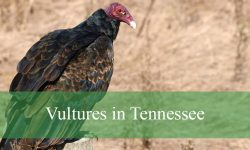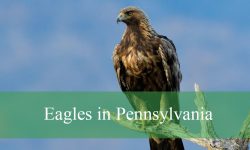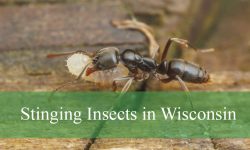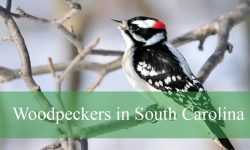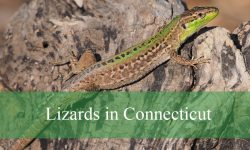Kansas, with its sprawling prairies, woodlands, and agricultural fields, provides an ideal habitat for several quail species. Quails are small, ground-dwelling birds known for their distinctive calls, rapid flight, and secretive nature. Birdwatchers, hunters, and wildlife enthusiasts in Kansas often seek these birds due to their unique behaviors and ecological importance. This article explores three main types of quail found in Kansas, detailing their appearance, behaviors, feeding habits, reproduction, distribution, and some intriguing facts.
Quails are remarkable for their adaptability to diverse habitats. They play a critical role in the ecosystem by controlling insect populations and serving as prey for predators. Understanding the quail species in Kansas not only enriches birdwatching experiences but also helps in conservation efforts. Let’s delve into each species, uncovering their secrets and how to identify them in the wild.
Northern Bobwhite (Colinus virginianus)
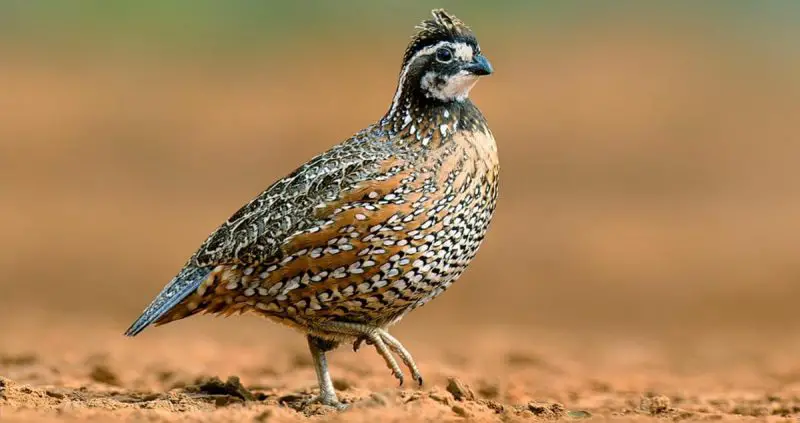
Characteristics and Identification
The Northern Bobwhite is perhaps the most recognizable quail species in Kansas. Males display a striking white throat and eye stripe contrasted against a dark brown face, while females exhibit more muted, buffy tones. Their bodies are rounded with a short tail and plump appearance. The Northern Bobwhite’s feathers show a mix of brown, black, and white patterns, providing excellent camouflage against the prairie grasses.
Identifying this quail can be easier by its distinct “bob-white” call, which males use to establish territory and attract mates. From a distance, birdwatchers may notice their quick, scuttling movements along the ground rather than prolonged flight. Adults typically measure about 10 inches in length and weigh between 5.5 to 6.5 ounces, making them a medium-sized quail with a compact body shape.
Behavior and Feeding
Northern Bobwhites are primarily ground dwellers, often found in grasslands, shrublands, and agricultural edges. They are diurnal, actively foraging during the morning and late afternoon. Their diet mainly includes seeds, insects, and berries, varying seasonally. In spring and summer, they rely heavily on insects like beetles and grasshoppers to provide protein, especially for their chicks.
These quails are known for their strong covey structure. A covey typically consists of 8 to 20 individuals, allowing them to forage efficiently while maintaining vigilance against predators. Northern Bobwhites are also quick to flush from cover, flying in a sudden burst when startled.
Reproduction and Distribution
Northern Bobwhites breed from late spring to early summer. Nests are shallow depressions on the ground, lined with grasses and leaves, often hidden under shrubs or tall grasses. Clutches usually contain 12–15 eggs, with incubation lasting approximately 23 days. Chicks are precocial, leaving the nest shortly after hatching and following parents to feed.
This species is widely distributed throughout Kansas, thriving in open fields, hedgerows, and even suburban edges with suitable cover. Their population, however, has experienced declines due to habitat loss and agricultural intensification.
Fun Fact
Northern Bobwhites have a unique method of camouflage known as “freeze and flush.” When threatened, they remain motionless, blending into the grass, only taking flight at the last moment. This behavior helps them evade numerous predators in the dense prairie habitats of Kansas.
Scaled Quail (Callipepla squamata)
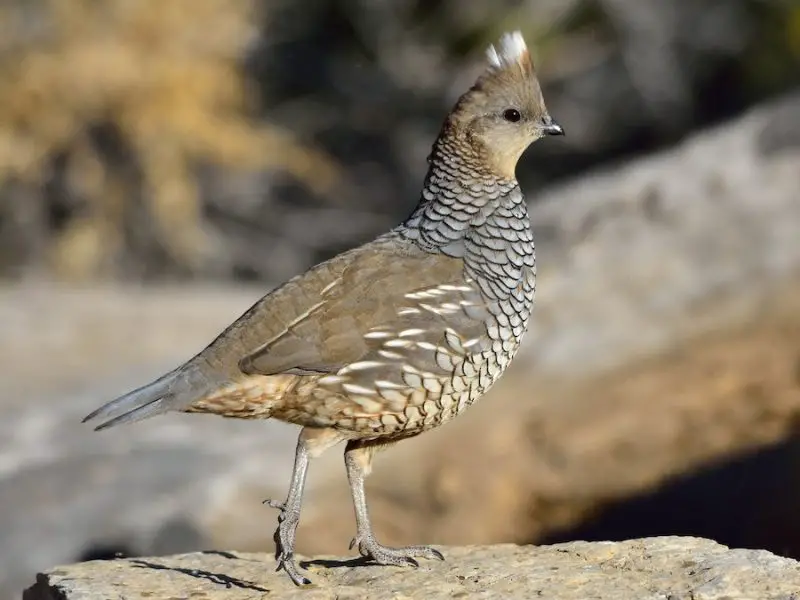
Characteristics and Identification
Scaled Quail, also known as Blue Quail due to their bluish-gray plumage, are easily distinguished by their scale-like feather patterns across the breast and body. Both sexes share similar coloration, although males often appear slightly brighter. They sport a short, curved crest on their heads and pale bills. Their underparts are lighter with subtle barring, while their legs are robust, suitable for ground foraging.
This species measures roughly 11–12 inches in length and weighs around 6.5–7.5 ounces, slightly larger than the Northern Bobwhite. Their cryptic coloration allows them to merge seamlessly with the sandy and rocky soils commonly found in western Kansas.
Behavior and Feeding
Scaled Quail are highly adaptable, living in arid regions, grasslands, and scrubby hills. They are social birds, often forming coveys of 10–30 individuals outside the breeding season. Feeding primarily occurs in the early morning and late afternoon, focusing on seeds, leaves, and occasional insects. Water is crucial in their habitats, and they often visit water sources daily.
Flight is rapid but short, typically only a few dozen feet before they drop back into cover. Scaled Quail are diurnal but remain wary, often darting quickly into nearby shrubs at the slightest disturbance.
Reproduction and Distribution
Breeding occurs in spring, with nests concealed in depressions lined with grasses. Clutch sizes range from 9 to 12 eggs, with incubation lasting about 23 days. Both parents help lead the young to feeding areas after hatching.
Scaled Quail are primarily found in western Kansas, favoring drier, open landscapes and sandy soils. Their population is less dense in eastern regions but can still be spotted near prairies and ranchlands with adequate cover.
Fun Fact
Scaled Quail have an unusual adaptation for arid life: they can survive for extended periods without direct water by obtaining moisture from seeds and succulent plants. This remarkable trait allows them to thrive in the drier regions of Kansas where other quail species might struggle.
Gambel’s Quail (Callipepla gambelii)
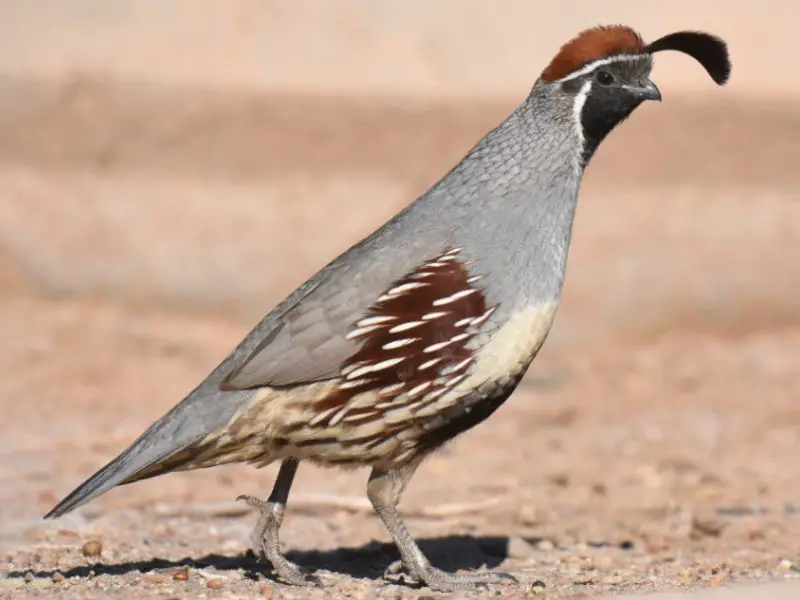
Characteristics and Identification
Gambel’s Quail are strikingly patterned birds with a distinctive black, comma-shaped plume on the top of their heads. Males display a gray-blue body with chestnut sides and white facial markings, while females are duller, featuring grayish-brown tones and a smaller plume. These quails measure approximately 11 inches in length and weigh around 6–8 ounces.
Their bold patterns and head plume make identification straightforward, even at a distance. Observers often notice their unique head movements, bobbing slightly as they walk along the ground in search of food.
Behavior and Feeding
Gambel’s Quail are highly social and form coveys of up to 20 birds. They forage extensively for seeds, leaves, and insects, scratching the ground to uncover hidden food. This species is predominantly terrestrial, preferring to run rather than fly when threatened. However, if startled, they can take quick, low flights to escape predators.
Their behavior is characterized by strong family bonds. Coveys remain cohesive throughout the year, enhancing survival through cooperative vigilance. During the hottest part of the day, they often rest in shaded areas, conserving energy and avoiding predators.
Reproduction and Distribution
Breeding season begins in early spring. Nests are hidden on the ground in shallow depressions, often lined with grasses or leaves. Clutch sizes range from 12 to 16 eggs, with incubation lasting about 24 days. Young quails are capable of feeding themselves shortly after hatching but remain close to the parents for protection.
Gambel’s Quail are less widespread in Kansas compared to Northern Bobwhite and Scaled Quail, primarily appearing in western and southwestern regions where semi-arid habitats dominate. Their presence is often associated with desert-like vegetation patches and rocky outcrops.
Fun Fact
Gambel’s Quail perform a fascinating behavior called “dust bathing.” They find loose, dry soil, sink into it, and flap their wings to cover themselves with dust. This practice helps remove parasites and maintain feather health, a common behavior among desert-dwelling quails.
Habitat and Distribution Overview in Kansas
Kansas offers diverse habitats suitable for these three quail species. Northern Bobwhites are more common in the eastern and central prairies, favoring areas with tall grasses and brushy edges. Scaled Quail prefer western Kansas, where arid conditions, rocky soils, and sparse vegetation prevail. Gambel’s Quail, while rarer, can also be spotted in western and southwestern Kansas, especially in dry, semi-arid landscapes.
Quail populations are influenced by land use practices. Agricultural fields, rangelands, and prairies provide critical nesting and foraging habitats, but urban development and habitat fragmentation pose challenges. Conservation efforts, including maintaining grassland patches and planting cover crops, are essential for sustaining healthy quail populations across the state.
Feeding Habits of Kansas Quails
All three quail species in Kansas are omnivorous, with diets adapting to seasonal availability. Seeds constitute the bulk of their diet throughout the year, including grains, grasses, and wild plants. Insects, such as beetles, grasshoppers, and caterpillars, become especially important during spring and summer, providing protein necessary for growth and reproduction.
Quails forage by scratching the ground, uncovering seeds and small invertebrates. They often feed in the early morning and late afternoon, avoiding the midday heat. Water sources are critical, especially for Scaled and Gambel’s Quail, which inhabit drier regions. Some species can extract moisture from food, demonstrating remarkable adaptation to their environments.
Reproduction and Life Cycle
Quail reproduction in Kansas is closely tied to seasonal conditions. Spring triggers nesting activity, with males establishing territories and performing mating displays. Ground nests are usually well-hidden, lined with grasses and leaves. Clutch sizes range from 9 to 16 eggs depending on species, with incubation periods averaging 23–24 days.
Chicks are precocial, leaving the nest soon after hatching and following parents to forage. Covey structures play a vital role in protecting young quails from predators. Adult quails often maintain strong social bonds, ensuring the survival of the next generation through cooperative vigilance.
Fun Facts About Kansas Quails
Quails are not just important ecologically but also fascinating to observe. Northern Bobwhites are renowned for their “bob-white” call, which is audible over long distances. Scaled Quail can survive without direct water for days by extracting moisture from plants and seeds. Gambel’s Quail use dust baths to remove parasites and maintain feather health.
All three species are excellent indicators of habitat quality. Healthy quail populations reflect well-managed grasslands and prairies, making them important for both hunters and conservationists. Additionally, their secretive behavior and sudden, explosive flights provide thrilling moments for birdwatchers.
Best Places and Times to Spot Quail in Kansas
Kansas offers excellent opportunities to observe quail in their natural habitats, especially during certain seasons and in specific regions. For the Northern Bobwhite, eastern and central Kansas prairies are ideal. Look for areas with tall grasses, hedgerows, and brushy field edges, which provide both cover and feeding grounds. Early morning and late afternoon are the best times to spot them, as these birds are most active during cooler parts of the day. Their distinctive “bob-white” calls can help locate coveys hidden in the vegetation.
Scaled Quail are more common in western Kansas, favoring arid grasslands, rocky outcrops, and sandy soils. Observing these birds is easiest in the spring and fall when they forage actively in search of seeds and insects. Scaled Quail are diurnal but remain wary, so patience and quiet movement are essential for successful spotting.
Gambel’s Quail, though less widespread, can also be seen in western and southwestern Kansas. Seek semi-arid regions with sparse shrubs and open plains. Like other quails, early mornings and late afternoons provide the best viewing opportunities, as they spend the heat of midday resting in shaded areas. Watching a covey move across open fields or engage in dust-bathing can be a highlight for birdwatchers.
Overall, spring and fall are the peak seasons for quail observation in Kansas. Spring coincides with the breeding season, making birds more vocal and easier to locate, while fall brings larger coveys together, increasing the chance of seeing multiple individuals at once. Patience, quiet observation, and knowledge of their preferred habitats are key to enjoying quail-watching experiences across the state.
Conclusion
Kansas is home to three remarkable quail species: the Northern Bobwhite, Scaled Quail, and Gambel’s Quail. Each exhibits unique characteristics, behaviors, and adaptations that allow them to thrive in the state’s diverse habitats. Understanding their identification, feeding habits, reproductive strategies, and distribution is essential for birdwatchers, hunters, and conservationists alike.
Whether observing a covey scurrying across a prairie or hearing the iconic call of a Northern Bobwhite, these quails offer an enriching glimpse into Kansas’ wildlife. Protecting their habitats ensures that these fascinating birds will continue to grace the fields, brushlands, and prairies of Kansas for generations to come.
FAQs About Quail in Kansas
What are the main quail species found in Kansas?
Kansas is home to three primary quail species: the Northern Bobwhite, Scaled Quail, and Gambel’s Quail. Each species has unique characteristics, habitats, and behaviors that make them identifiable to birdwatchers and wildlife enthusiasts.
How can I identify Northern Bobwhite, Scaled, and Gambel’s Quail?
Northern Bobwhite males have a white throat and eye stripe, while females are more muted in color. Scaled Quail have a distinctive blue-gray body with scale-like feather patterns, and both sexes have short crests. Gambel’s Quail feature a black, comma-shaped plume on their heads, with males showing gray-blue bodies and chestnut sides. Observing their calls, plumage patterns, and head shapes helps in identification.
When is the best time to see quail in Kansas?
The best times are early mornings and late afternoons, when quails are most active for foraging. Spring is ideal for spotting Northern Bobwhites because of their vocal mating calls, while fall brings coveys together, making them easier to observe.
Where in Kansas can quail be spotted?
Northern Bobwhite are common in eastern and central prairies with tall grasses and brushy edges. Scaled Quail prefer western Kansas’ arid grasslands and sandy soils. Gambel’s Quail appear in western and southwestern regions with semi-arid, open plains and sparse shrub cover.
What do quails eat in the wild?
Quails are omnivorous. They eat seeds, grains, berries, and insects. In spring and summer, insects provide essential protein for chicks. They forage on the ground by scratching leaf litter and soil to uncover food.
How do quails reproduce in Kansas?
Quails nest on the ground in shallow depressions lined with grasses and leaves. Clutch sizes range from 9 to 16 eggs, depending on the species. Incubation lasts about 23–24 days. Chicks are precocial, leaving the nest shortly after hatching and following parents for protection and feeding.
Are quails easy to spot in Kansas?
Quails are generally secretive and well-camouflaged, making them difficult to see. Northern Bobwhites are more vocal, while Scaled and Gambel’s Quail blend with arid landscapes. Patience, quiet movement, and knowledge of habitats are key to observing them successfully.
Do quails in Kansas have any interesting behaviors?
Yes. Northern Bobwhites use a “freeze and flush” strategy to avoid predators. Scaled Quail can survive long periods without direct water. Gambel’s Quail perform dust baths to remove parasites and maintain feather health. Covey formation is another fascinating behavior that enhances their survival.

